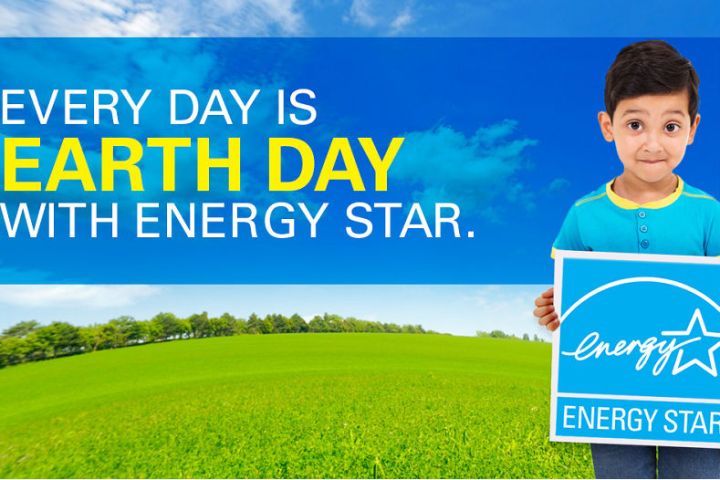
Read more: Who’s to blame when hoverboards burst into flames?
Here’s a look at who creates these certifications, what they stand for, and why they should be considered when buying a new appliance.
Energy Star

Who is it from? When you see the words “Energy Star,” you know that that appliance meets or surpasses the energy efficiency requirements set by the U.S. Environmental Protection Agency (EPA) and the U.S. Department of Energy.
The Energy Star program was started by the EPA in 1992 under the authority of the Clean Air Act in order to encourage manufacturers to create energy-efficient products and reduce greenhouse gas emissions. Computers were among the first products to receive Energy Star labels, but the program has expanded to include office equipment products, heating and cooling equipment, home electronics, lighting, and of course, major appliances like refrigerators.
What they say: “Under EPA’s leadership, American consumers, businesses, and organizations have made investments in energy efficiency that are transforming the market for efficient products and practices, creating jobs, and stimulating the economy,” writes Energy Star. “Now over 20 years old and helped by more than 18,000 partners, the Energy Star program has boosted the adoption of energy efficient products, practices, and services through valuable partnerships, objective measurement tools, and consumer education. Significant opportunity for climate change mitigation exists from helping consumers and businesses save energy. Energy use in homes, buildings, and industry account for two thirds of greenhouse gas emissions in the United States.”
How is it tested? In order to earn an Energy Star label, a product has to undergo third-party testing in an EPA-recognized lab. Energy Star products may also be subjected to “off-the-shelf” tests throughout the year to ensure that manufacturers are producing energy efficient devices.
What appliances does it apply to? Dishwashers, fridges, washing machines, dehumidifiers, and air purifiers can all receive Energy Star ratings. Recently, the first dryers to meet energy-efficiency requirements were released by a number of manufacturers.
NSF

Who is it from? The National Sanitation Foundation was founded in 1944 to standardize sanitation and food safety requirements. While the product testing, inspection, and certification organization changed its name to NSF International in 1990 when they expanded their reach to the global community, their mission remains the same.
What they say: “NSF International is dedicated to being the leading global provider of public health and safety-based risk management solutions while serving the interests of all stakeholders, namely the public, the business community and government agencies,” writes NSF International. “Our mission is carried out by over 2,100 global employees, including microbiologists, toxicologists, chemists, engineers, and environmental and public health professionals.”
How is it tested? Similar to Energy Star certified appliances, products need to undergo third-party testing in order to receive an NSF label. The certification differs depending on the product, but it typically involves both a product test and a manufacturing facility inspection. Annual and unannounced plant inspections ensure that all products marked with the NSF label adhere to strict food safety standards.
What appliances does it apply to? A number of small appliances, like coffee makers and slow-cookers, can be NSF certified. When it comes to large appliances, washers and dryers that claim to reduce 99.9 percent of allergens and microorganisms must meet NSF testing standards.
UL

Who is it from? Underwriters Laboratories has been working to improve safety standards since the late 1800s. The company has developed safety standards for everything from cell phones to air conditioners to smoke detectors. UL certifies, tests, and inspects products to make sure that they are safe for both the workplace and the home. The company also develops safety standards for emerging technologies, something they have been doing since early innovations with electricity.
What they say: “Innovation inherently creates risk,” explains UL on its website. “When a new product or service is created, the world is often unaware of the dangers or risks associated with the new technology. Electricity is a great example of this concept. When first introduced at the World’s Fair, electricity posed a major fire and electrocution hazard to buildings and attendees. Through science-based research, we began to understand that electricity, when handled and installed properly, greatly improves peoples’ quality of life. Electricity’s fire and electrocution risks were mitigated through new safety standards.”
How is it tested? In order to become a UL listed product, a series of rigorous tests have to be performed to ensure that the product meets safety specifications. As the company operates in more than 100 countries, has published more than 1,500 safety standards, and has placed their stamp of approval on more than 22 billion products, pinning down an exact testing procedure is difficult. However, all UL certified items meet the company’s relevant safety standards, which are developed in consultation with manufacturers, consumers, inspection authorities, and government officials.
What appliances does it apply to? You’ll find the UL symbol on a number of small appliances, like irons and vacuums, as well as on HVAC systems.


